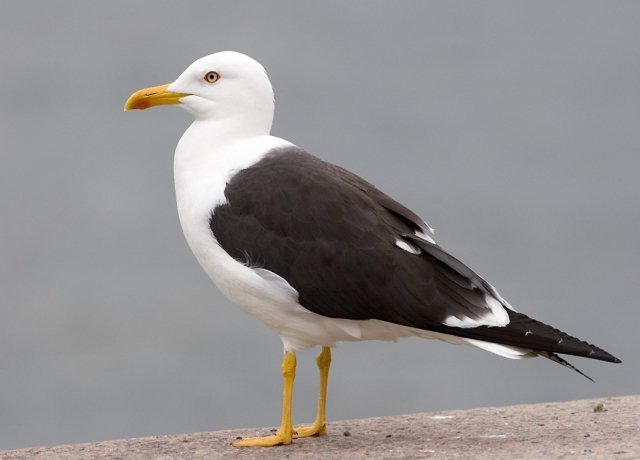Lesser Black-backed Gull

Lesser Black-backed Gull
NL: Kleine mantelmeeuw
D: Heringsmöwe
F: Goéland brun
Latin name: Larus fuscus (Linnaeus, 1758)
Bird group: Meeuwvogels
The lesser black-backed gull (Larus fuscus) is a large gull that breeds on the Atlantic coasts of Europe. It is migratory, wintering from the British Isles south to West Africa.
The lesser black-backed gull was one of the many species originally described by Carl Linnaeus in his 1758 10th edition of Systema Naturae, and it still bears its original name Larus fuscus. The scientific name is from Latin. Larus appears to have referred to a gull or other large seabird, and fuscus meant black or brown.
The lesser black-backed gull is smaller than the European herring gull. The taxonomy of the herring gull / lesser black-backed gull complex is very complicated; different authorities recognise between two and eight species. This group has a ring species distribution around the Northern Hemisphere. Differences between adjacent forms in this ring are fairly small, but by the time the circuit is completed, the end members, herring gull and lesser black-backed gull, are clearly different species. The lesser black-backed gull measures 51–64 cm (20–25 in), 124–150 cm (49–59 in) across the wings, and weighs 452–1,100 g (0.996–2.425 lb), with the nominate race averaging slightly smaller than the other two subspecies. Males, at an average weight of 824 g (1.817 lb), are slightly larger than females, at an average of 708 g (1.561 lb). Among standard measurements, the wing chord is 38 to 45 cm (15 to 18 in), the bill is 4.2 to 5.8 cm (1.7 to 2.3 in), and the tarsus is 5.2 to 6.9 cm.
Food:
They are omnivores like most Larus gulls, and they eat fish, insects, crustaceans, worms, starfish, molluscs, seeds, berries, small mammals, eggs, small birds, chicks, scraps, offal, and carrion.
Song/call:

